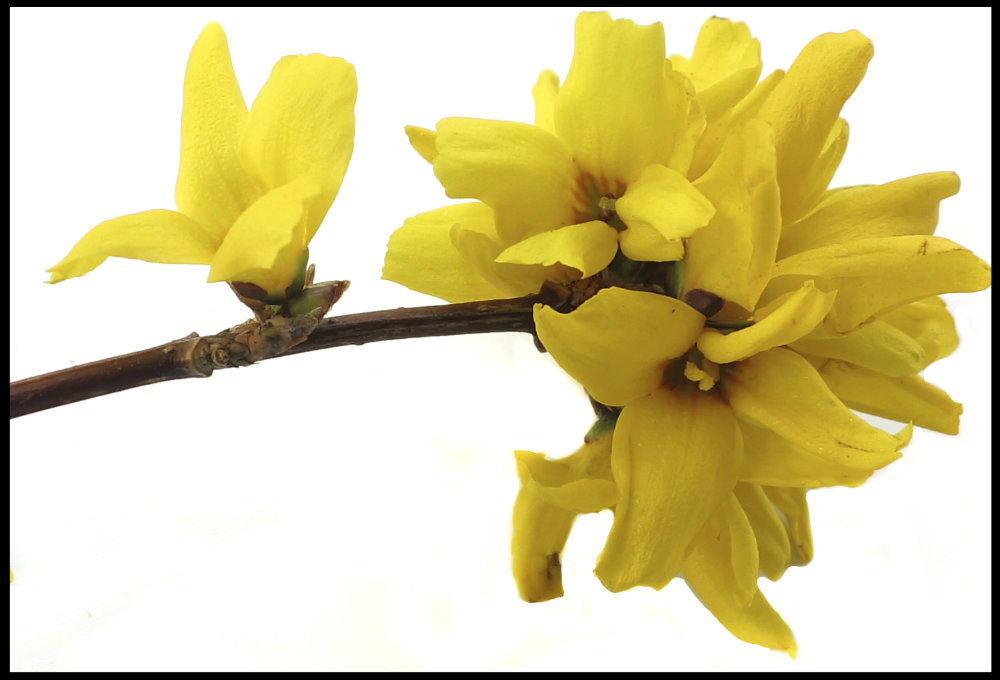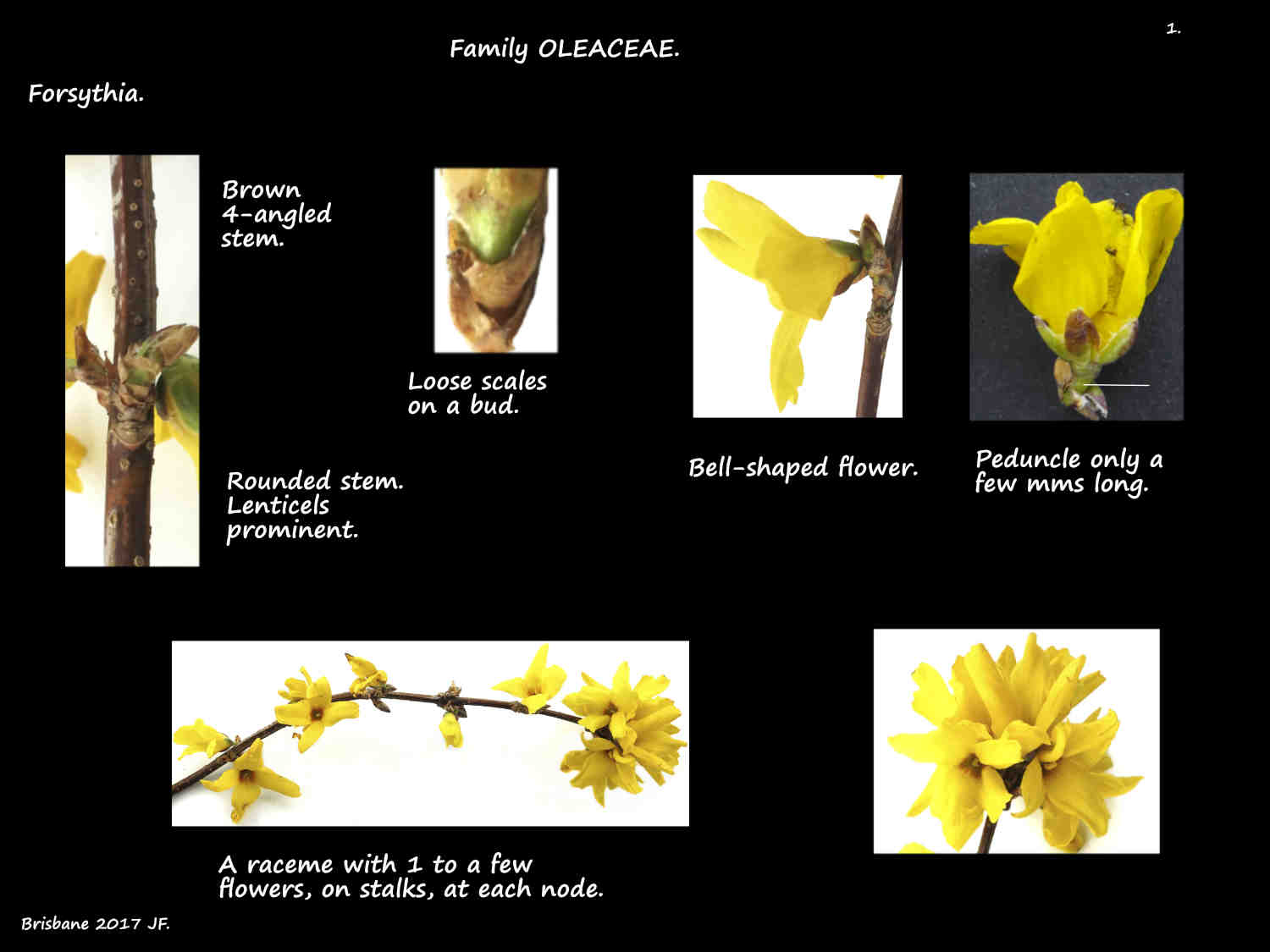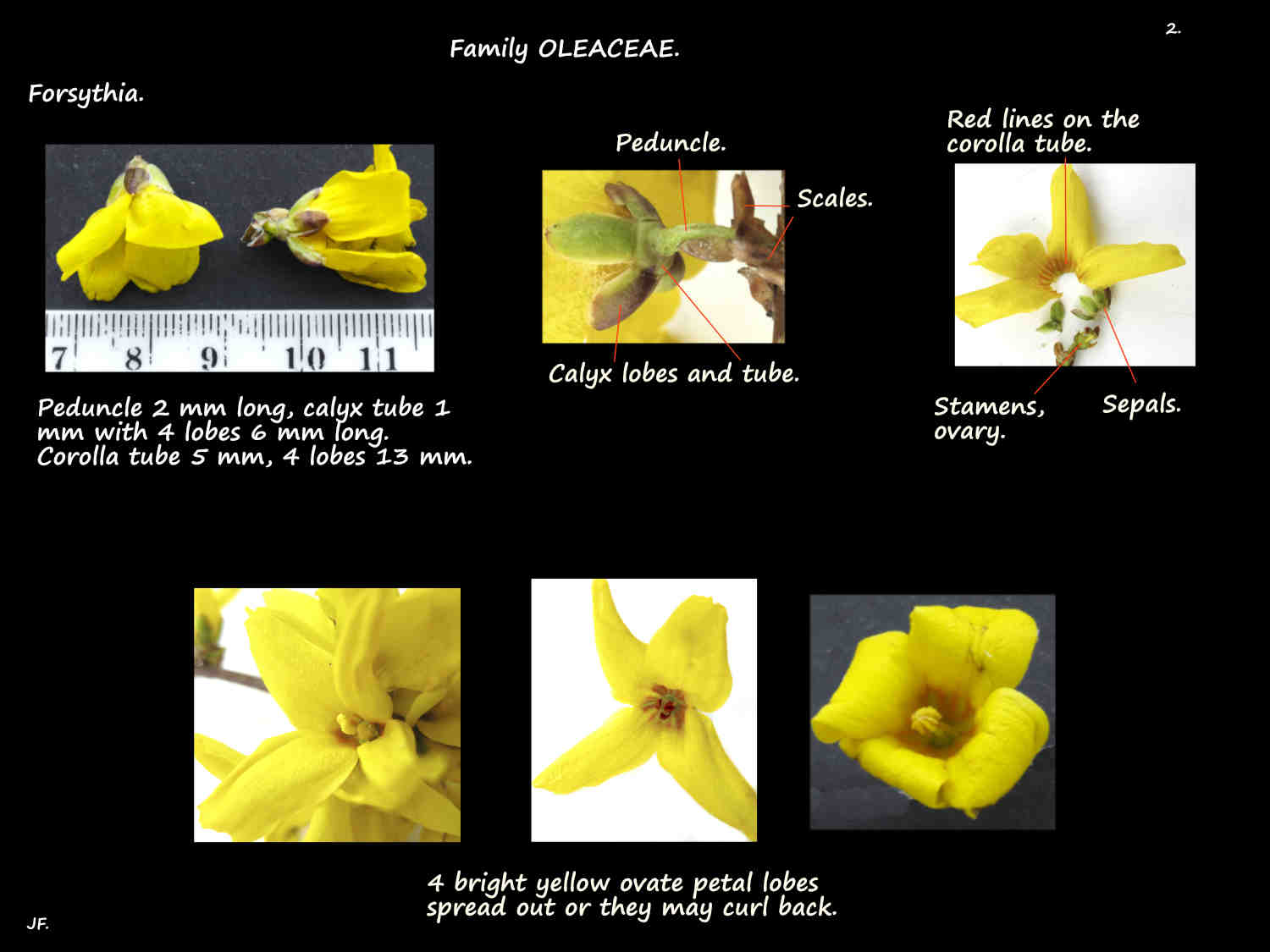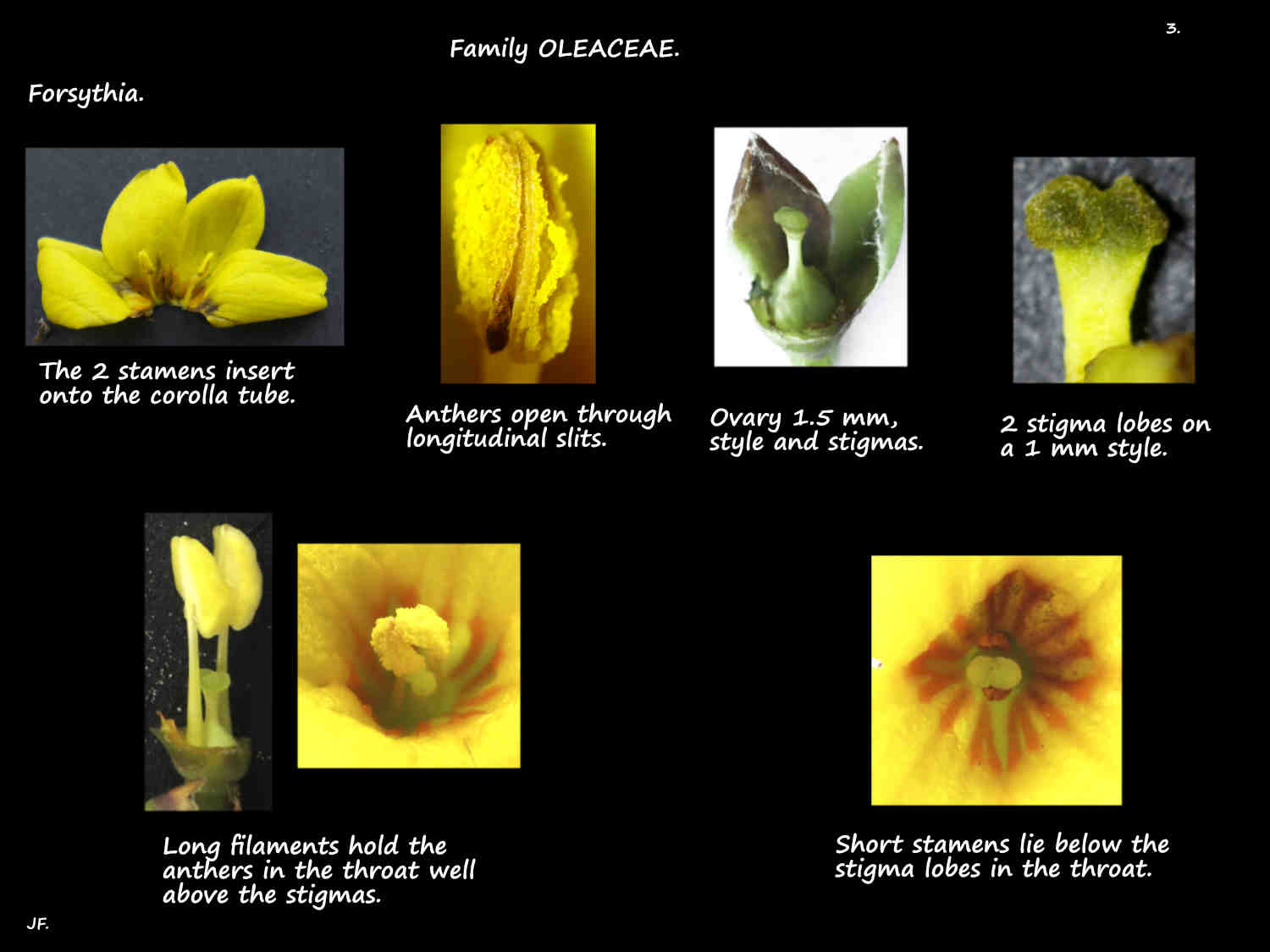Forsythia.
Family Oleaceae > Tribe Forsythieae has 11 to 16 species of Forsytha.
Almost all are native to eastern Asia and it can be extremely difficult to distinguish the species as the differences between them are very slight.
Forsythia are deciduous shrubs from 1 to 3 (6) m high.
There may be a single trunk but often there are cane-like stems from the base.
Others have a weeping or bushy appearance and some are almost prostrate.
Small green then yellow, brown or purple twigs are round or 4-angled.
There may be hairs on young twigs for a year or two but they are usually lost.
The brown to grey bark has prominent lenticels (nodules).
Low branches may root or sucker.
The opposite leaves are on a short green or reddish petiole.
The blade is typically simple but there may be 2 small basal lobes or the blade may be divided into 3 leaflets.
Up to 10 (15) cm long the wide or narrow blades can be ovate or lance-shaped.
The edge may be smooth or have some teeth towards the tip.
Young leaves may have some hairs on the lower surface that are usually lost but some may remain on the veins on older leaves.
The green to grey-green leaves may turn yellow or maroon before they fall.
Inflorescences are a raceme with flowers, on a short stalk along the midrib.
Each node can have 1 to a few flowers with those on the lower nodes opening first.
The bell-shaped flowers open before or occasionally with, the new leaves.
The calyx has a very short basal tube with 4 green lobes.
The 4 petal lobes on the 2 to 3 cm long corolla are longer than the tube.
Petals are pale to deep yellow or occasionally greenish.
There are 2 stamens inserted onto the base of the corolla tube.
The superior ovary has 1 style with a bi-lobed stigma.
There are numerous pendulous ovules with axile placentation.
There are 2 different arrangements of the stamens and the style/stigmas to prevent self pollination.
In half the flowers the anthers lie in the narrow mouth of the corolla tube and the stigmas, on a short style lie in the tube.
The other half have short stamens and a longer style so the stigma lobes sit higher and are exposed at the top of the corolla tube.
The fruit are capsules with a few to many small slightly winged seeds.
*********************
Hybrids and cultivars.
Virtually all garden plants are one of the at least 40 hybrids and cultivars available.
Commonly grown forsythias are:
Forsythia suspensa, sold as ‘Golden Bells’ is a deciduous shrub to 3 m high and wide with weeping branches and pale yellow flowers.
Its hybrid with F. viridissima, Forsythia x intermedia is a smaller erect plant with deep yellow flowers.
Another common cultivar is Forsythia x intermedia ‘Lynwood’, an erect 2 to 3 m high plant with large, dense bright yellow flowers, often in groups of 3 along the branches.
There are dwarf cultivars, ones with variegated leaves and one with primrose flowers.
J.F.





